fall inside a hole
40th Anniversary Plarail Limited Edition Set (1999)
First written April 9, 2024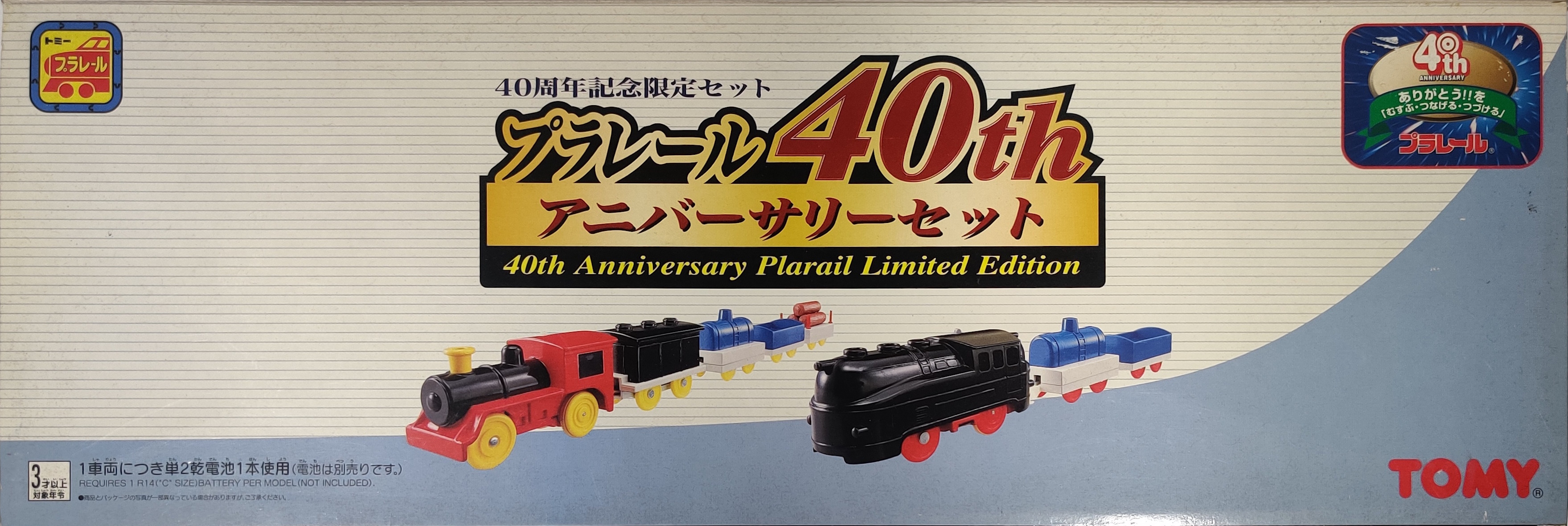
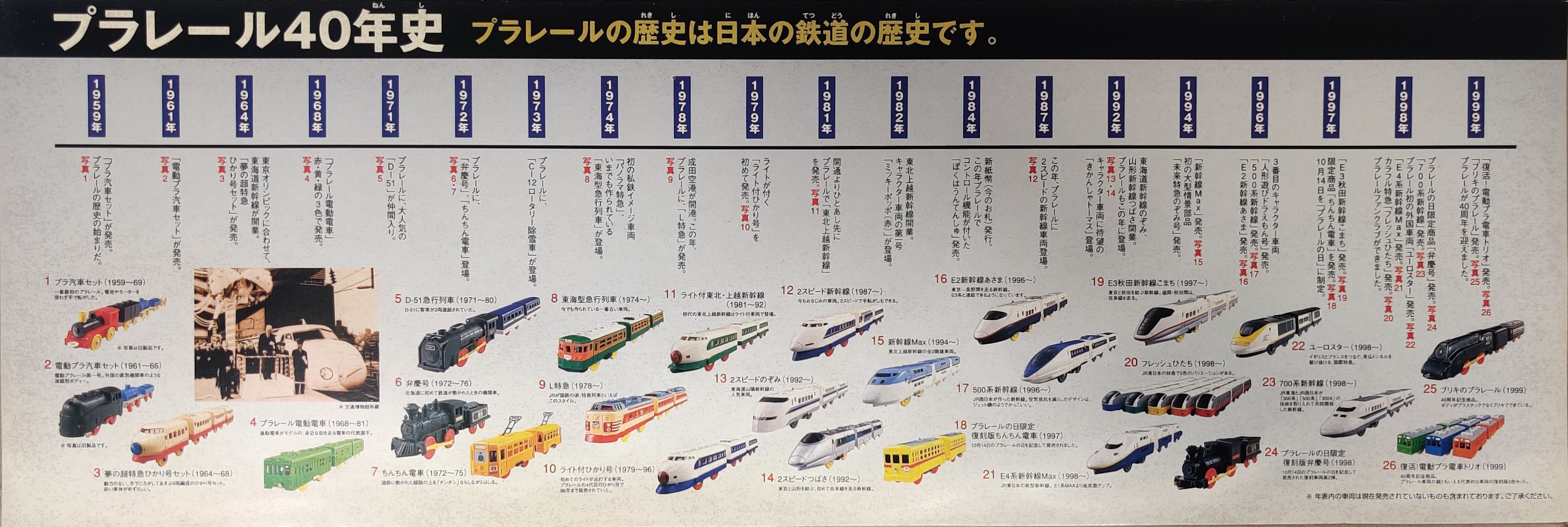

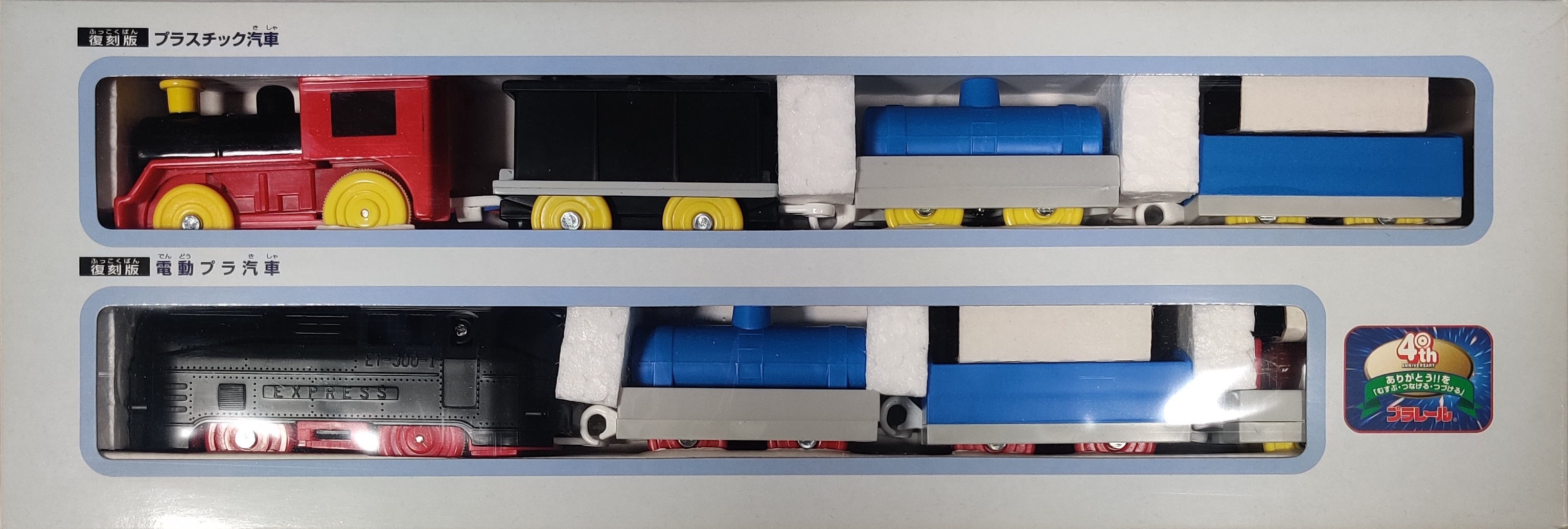


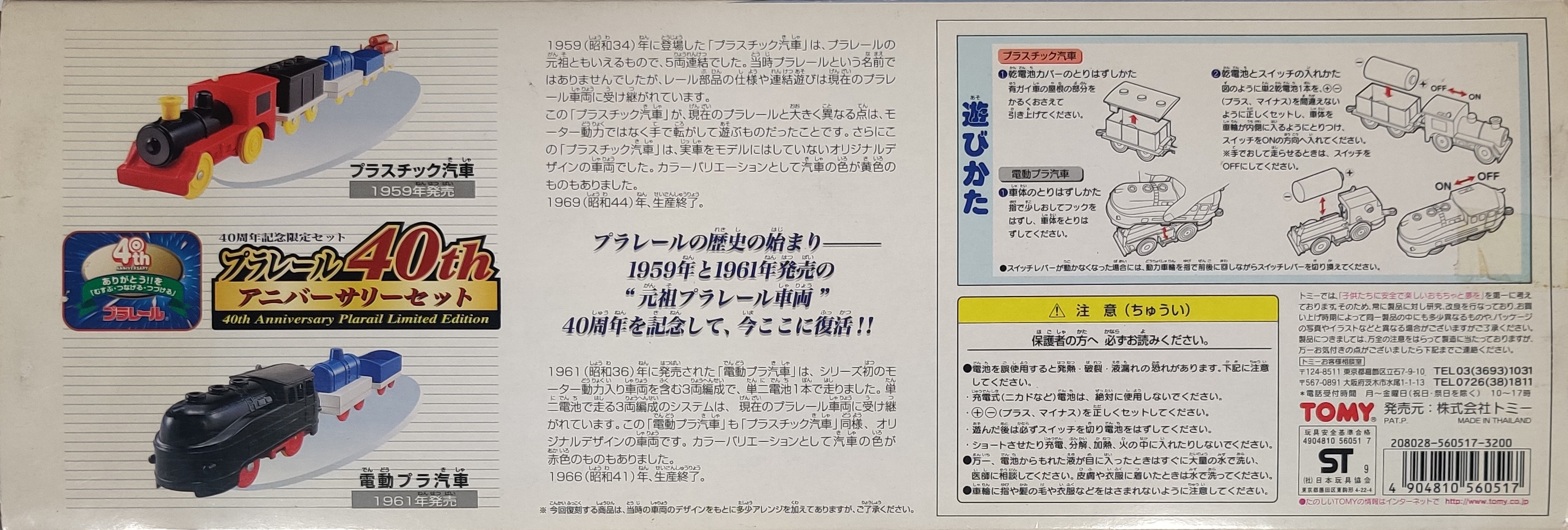
In 1999 as part of their celebration of the 40th anniversary of Plarail Tomy released updated versions of the 1959 Plastic Train, the first Plarail train, and the 1961 Electric Plastic Train, the first battery-powered Plarail, as the 40th Anniversary Plarail Limited Edition Set (プラレール 40th アニバーサリーセット subtitle 40周年記念限定セット). The box has a nice design incorporating the Hikari-Go logo as well as the 40th Anniversary mark. It seems to convey a quality product and it shows the contents and information about the toy and its history well. The set first released in late July 1999 at a price of 3,200 yen. The upper inner box flap shows a timeline of some different Plarail releases. The mentioned events are:
- 1959: "Plastic Train Set" is now on sale. This is the beginning of Plarail's history. The pictured train is a later plastic-coupling Plastic Train. Plastic Train Set (1959~69). The first Plarail. It rolled by hand without using batteries or motors. The note under the picture says that the photo is an old product.
- 1961: "Electric Plastic Train Set" is now on sale. The pictured train is the first battery powered Plarail locomotive, based on a German clockwork train. Electric Plastic Train Set (1961~66). The first electric Plarail. Streamlined body like a foreign steam locomotive. Like the Plastic Train, it notes the picture is an old product.
- 1964: The Tokaido Shinkansen opens in time for the Tokyo Olympics. "Dream Super Express Hikari Set" is now on sale. The pictured train is the early unpowered Plarail 0 series Shinkansen. Dream Super Express Hikari Set (1964~68). A non-powered 4-car Hikari set that can be rolled by hand. The red car body is rare.
- 1968: "Plarail Electric Train" released in three colors: red, yellow, and green. The train pictured is an early green Electric Train with unpainted roof and bent up power switch. Plarail Electric Train (1968~81). A train modeled after common commuter trains that run through familiar towns.
- 1971: The very popular Plarail "D-51" joins the group. Pictured is a later D-51 Express Train with plastic crank pins and coaches lacking pantographs. D-51 Express Train (1971~80). Two passenger cars were connected to D-51.
- 1972: Benkei and Chin Chin Tram appear in Plarail. The pictured train is the original release Benkei steam locomotive. Benkei (1972~76). A locomotive used when the first railway was built in Hokkaido.
- 1972: Benkei and Chin Chin Tram appear in Plarail. The
pictured train is the original release Chin Chin Tram tram.
Chin Chin Tram (1972~75). It moves along the tracks laid in the
roadway while making a Chin Chin sound.
1973: The Plarail "C-12 Rotary Snowplow" is now available. No associated picture. - 1974: The first private railway vehicle appears, the "Panorama Express". The oldest vehicle still made today, the "Tokai type Express Train" appears. The image shows a new-power Tokai-type train. Tokai Type Express Train (1974~). The oldest vehicle still manufactured.
- 1978: Narita Airport opens. This year, "L Limited Express" is released in Plarail. Modern release estimates date the L Limited Express to 1976 or certainly 1977, with a revised version appearing in 1978. Pictured is a new power L Limited Express. L Limited Express (1978~). When JR was a national railway, limited express trains were of this style.
- 1979: Light is on. "Hikari-go with Light" released for the first time. Pictured is a new power Hikari with Light. Hikari-go with Light (1979~96). The first car with lights on. It was the 4th generation Hikari issue of Plarail and was on sale until 1996.
- 1981: The Tohoku Joetsu Shinkansen is released in Plarail
one day before its opening. Pictured is a new power
Tohoku
Joetsu Shinkansen with Light. Tohoku Joetsu Shinkansen
with Lights (1981~92). The first Tohoku Joetsu Shinkansen appeared
as a vehicle with lights.
1982: Tohoku Joetsu Shinkansen opens. First character vehicle "Mickey Poppo (Red)" is now available. No associated picture.
1984: New bank notes current bank notes) issues. This year in Plarail comes a control function. "I'm a Train Driver" is released. No associated picture. - 1987: This year, Plarail introduced 2-speed Shinkansen vehicles. The pictured train appears to be an early Thailand-production 2-Speed Shinkansen with white power switch.
- 1992: Tokaido Shinkansen Nozomi, Yamagata Shinkansen Tsubasa opens. Plarail trains also appeared in this year. Pictured is the 2-Speed Nozomi. 2-Speed Nozomi (1992~). A popular train on the Tokaido Sanyo Shinkansen.
- 1992: Tokaido Shinkansen Nozomi, Yamagata Shinkansen Tsubasa
opens. Plarail trains also appeared in this year. Pictured is the
2-Speed
Tsubasa. 2-Speed Tsubasa (1992~). The first Shinkansen to
run on a conventional line connecting Tokyo and Yamagata.
1992: "Thomas the Tank Engine" appears. - 1994: "Shinkansen Max" released. The first large-scale
scenic component "Future Express Nozomi" is released. Pictured
is the All 2-Story Shinkansen Max. Shinkansen Max (1994~). All two-level
train on the Tohoku Joetsu Shinkansen.
1996: Third character vehicle "Doll Play Doraemon Set" released. - "E2 Shinkansen Asama" released. Pictured is the E2 Shinkansen. E2 Shinkansen Asama (1996~). Shinkansen running between Tokyo and Nagano. It is now possible to connect with the E3 series.
- 1996: "500 Series Shinkansen" released. Pictured is a 500 Series Shinkansen. 500 Series Shinkansen (1996~). Shinkansen made by JR West. Designed to reduce air resistance. It's cool and looks like a jet plane.
- October 14th is established as "Plarail Day" and the limited edition product "Chin Chin Densha" is released. Pictured is the 1997 Plarail Day Chin Chin Tram reissue. Plarail Day Limited Reprint Chin Chin Densha (1997). It was released to commemorate Plarail Day on October 14th.
- 1997: "E3 Akita Shinkansen Komachi" released. Pictured is the
E3 Shinkansen. E3
Akita Shinkansen Komachi (1997~). The Shinkansen that connects Tokyo
and Skita runs on conventional lines between Morioka and Akita.
1998: A Plarail Fan Club has been created. - 1998: Colorful express train "Fresh Hitachi" released. Pictured are the five initial "Fresh Hitachi" colors. Fresh Hitachi (1998~). JR East's limited express trains come in five color variations.
- 1998: E4 Series Shinkansen Max released. Pictured is the E4 Shinkansen Max. E4 Shinkansen Max (1998~). JR East's new Shinkansen has more seats than the E1 series MAX.
- 1998: Plarail's first foreign vehicle "Eurostar" is released. Pictured is the Eurostar, also released in the UK an some parts of Europe under the Tomica World range. Eurostar (1998~). An international express train that runs through the Anglo-French tunnel connecting England and France.
- 1998: 700 series Shinkansen on sale. Pictured is the 700 Series Shinkansen. 700 Series Shinkansen (1998~). A Shinkansen jointly developed by JR Tokai and JR West that incorporates technology from the 300 series, 500 series, and 300X.
- 1998: Plarail Day limited product Benkei released. Pictured is the
rereleased Benkei. Plarail Day
Limited Reprint Benkei Issue (1998). The second revised vehicle
released to commemorate Plarail Day on October 14th.
1999: Plarail celebrates its 40th anniversary. - 1999: "Tinplate Plarail" released. Pictured is the tinplate C53 and coach from the Tinplate Plarail pack. Tin Plarail (1999). 40th anniversary product. The body is made of metal instead of plastic.
- 1999: "Revival! Electric Plastic Train Trio" released. Pictured are the three rereleased Electric Plastic Train Trio. Revival! Electric Plastic Train Trio (1999). 40th anniversary product. A 3-color set of reproductions of representative vehicles that can be said to be the face of Plarail vehicles.
A note at the bottom right mentions that not all vehicles shown in the chronology are currently on sale.
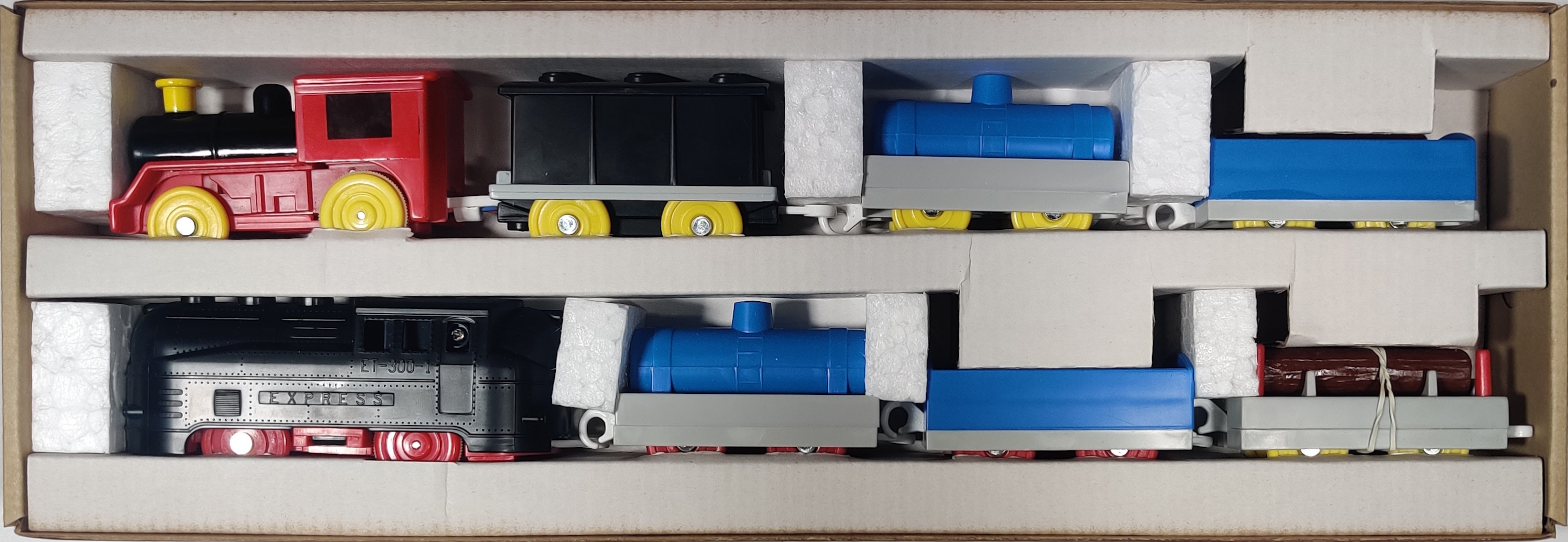
Inside the box are the two powered trains and their wagons. The Plastic Train has its full compliment of box car, well wagon, tanker, and log car while the Electric Plastic Train sports the tanker and well wagon it sometimes came with in sets of the 1960s. The contents of the box are well-packed and somewhat hard to get out to be honest, but I suppose the intention was still that you could just throw the box away if you wanted to play with these like regular Plarail.
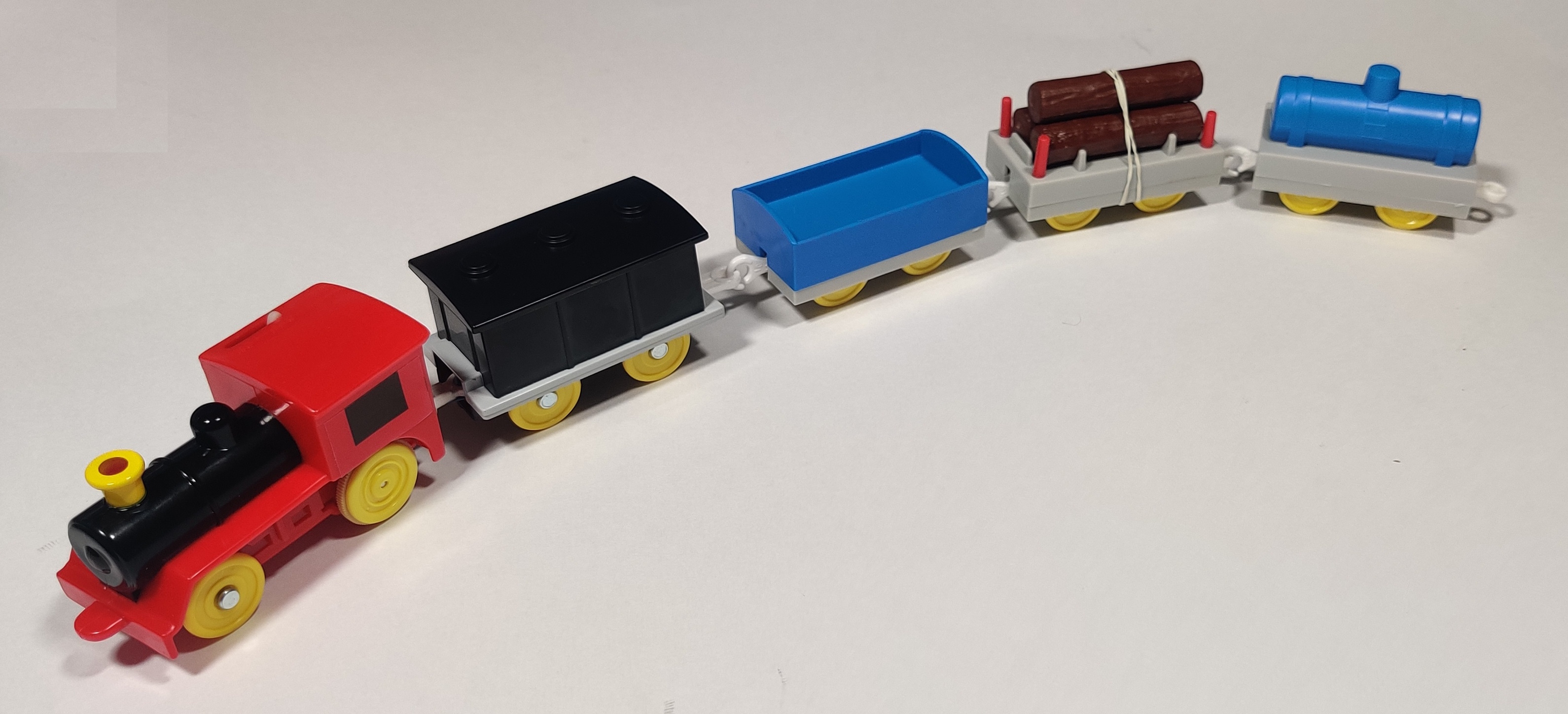
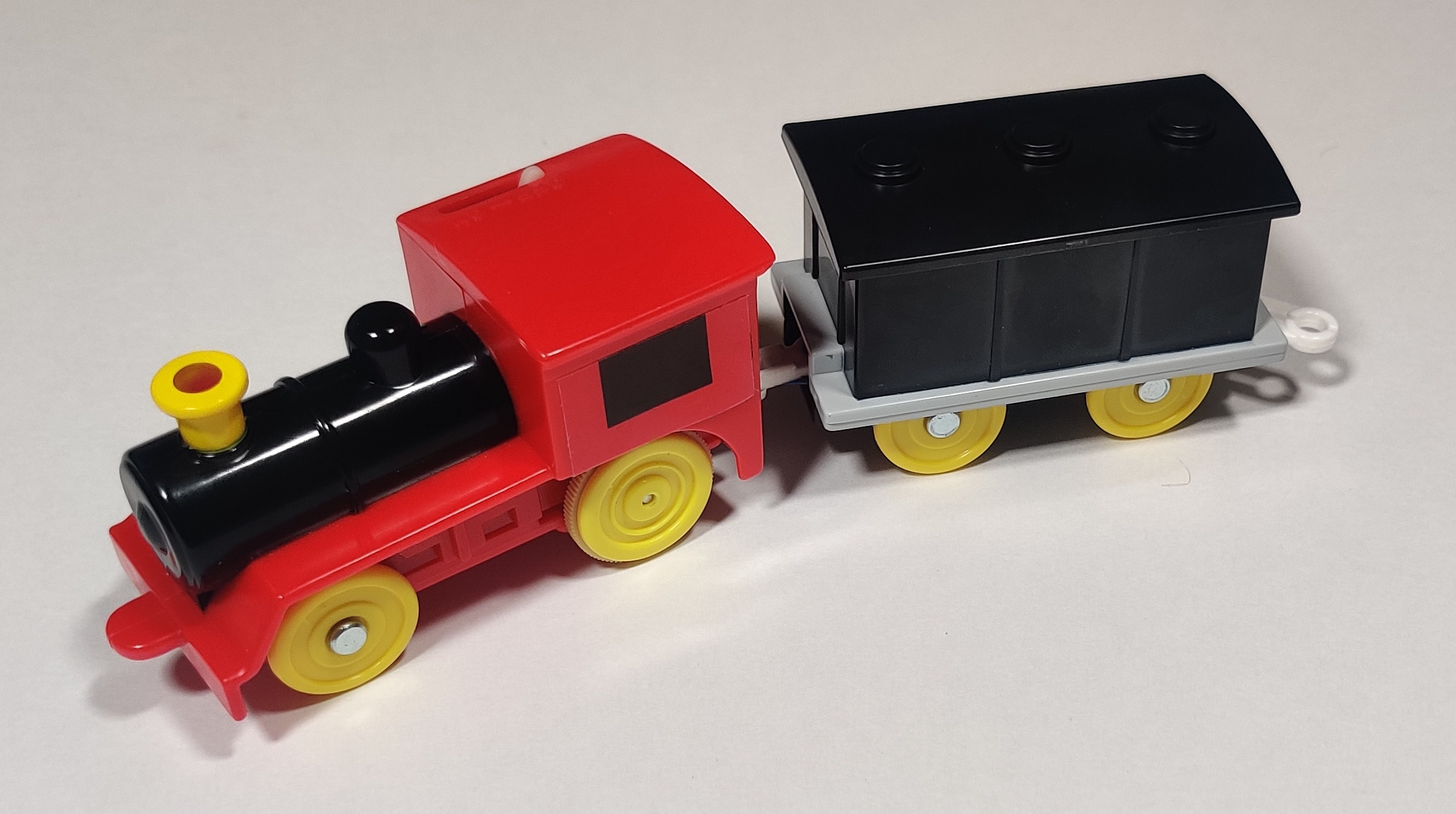
The plastic train I think looks very nice, with bright colors and shiny plastic. The cars are somewhat basic but they are meant to represent the basic late 50s and 60s style Plarail cars, and do a decent job at it. The little steam engine is actually powered, something that the original one was not, with the trade-off that the box van is permanently attached as it holds the C battery the locomotive takes.
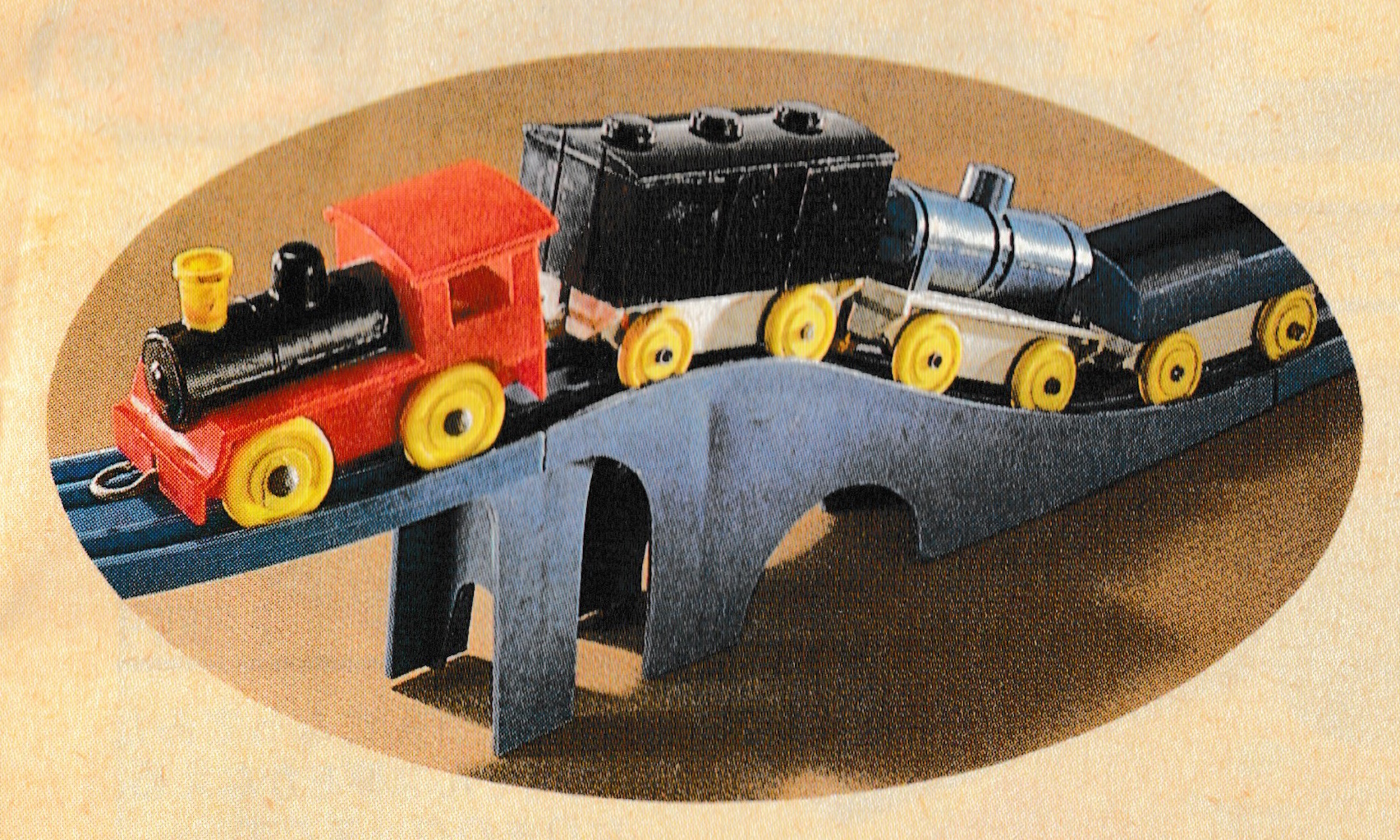
Early Plastic Train Set in the 1990 Plarail Catalogue
The back of the box says of the Plastic Train: The "Plastic Train" that appeared in 1959 (Showa 34) can be said to be the origin of Plarail, and was a five-car train. Although it was not called Plarail at that time, the specifications of the rail parts and the connection play have been inherited by Today's Plarail vehicles. The "Plastic Train" differed greatly from today's Plarail in that it was rolled by hand rather than by motor power. Furthermore, this Plastic Train was an original design that was not modeled after an actual vehicles. There was also a color variation with the train color being yellow. Production ended in 1969 (Showa 44). The yellow variant of the locomotive mentioned on the box was also reproduced in the larger Plarail Club Exclusive 40th Anniversary Album.
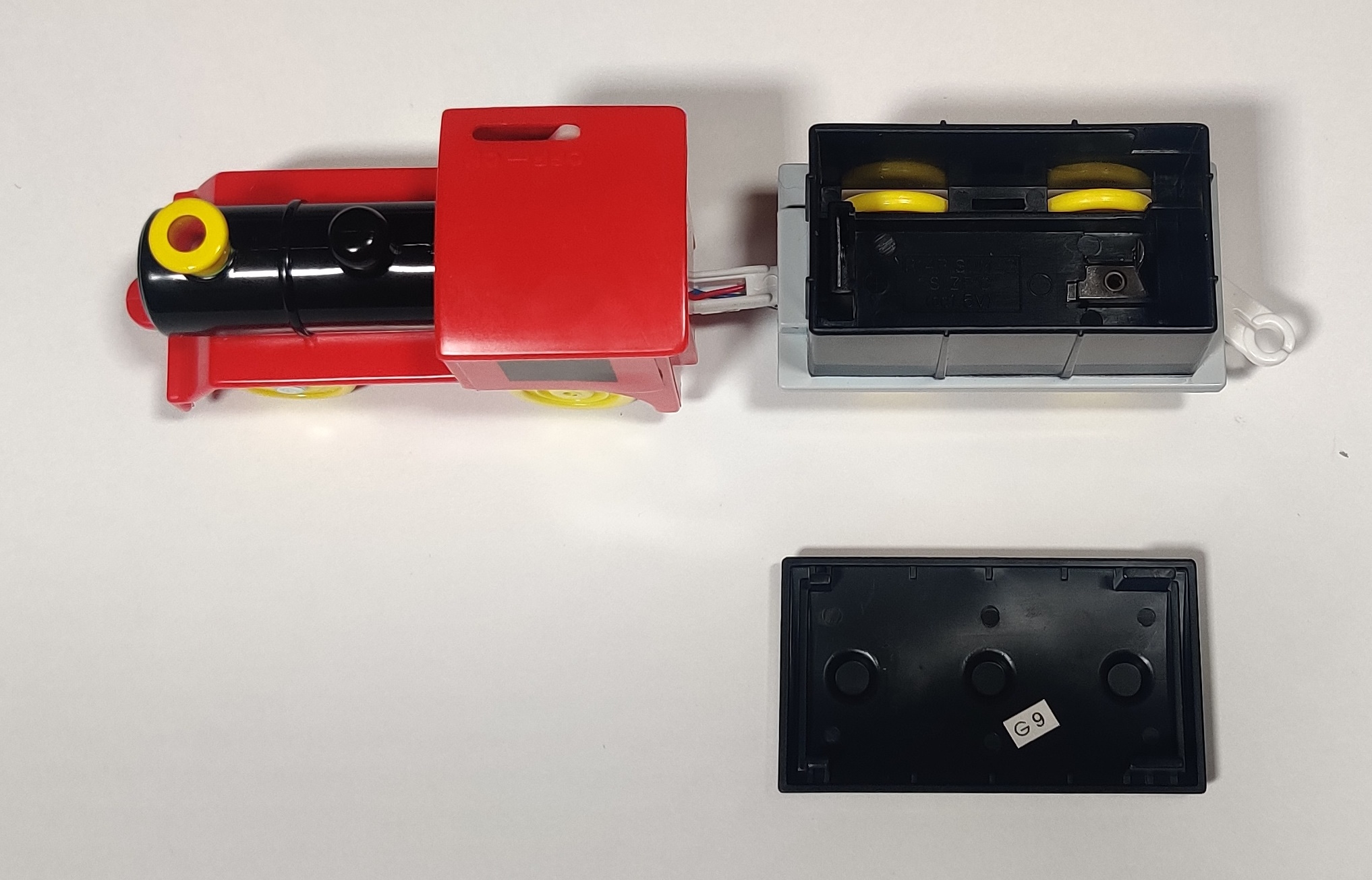

It may or may not be immediately obvious, but the Plastic Train is based on the new power Mickey Poppo, with some giveaways on the tooling for the box car matching sections on the Mickey Poppo tender and a version of the lower engine chassis still being used. These trains were all produced in mid 1999 and sold throughout the rest of the year.

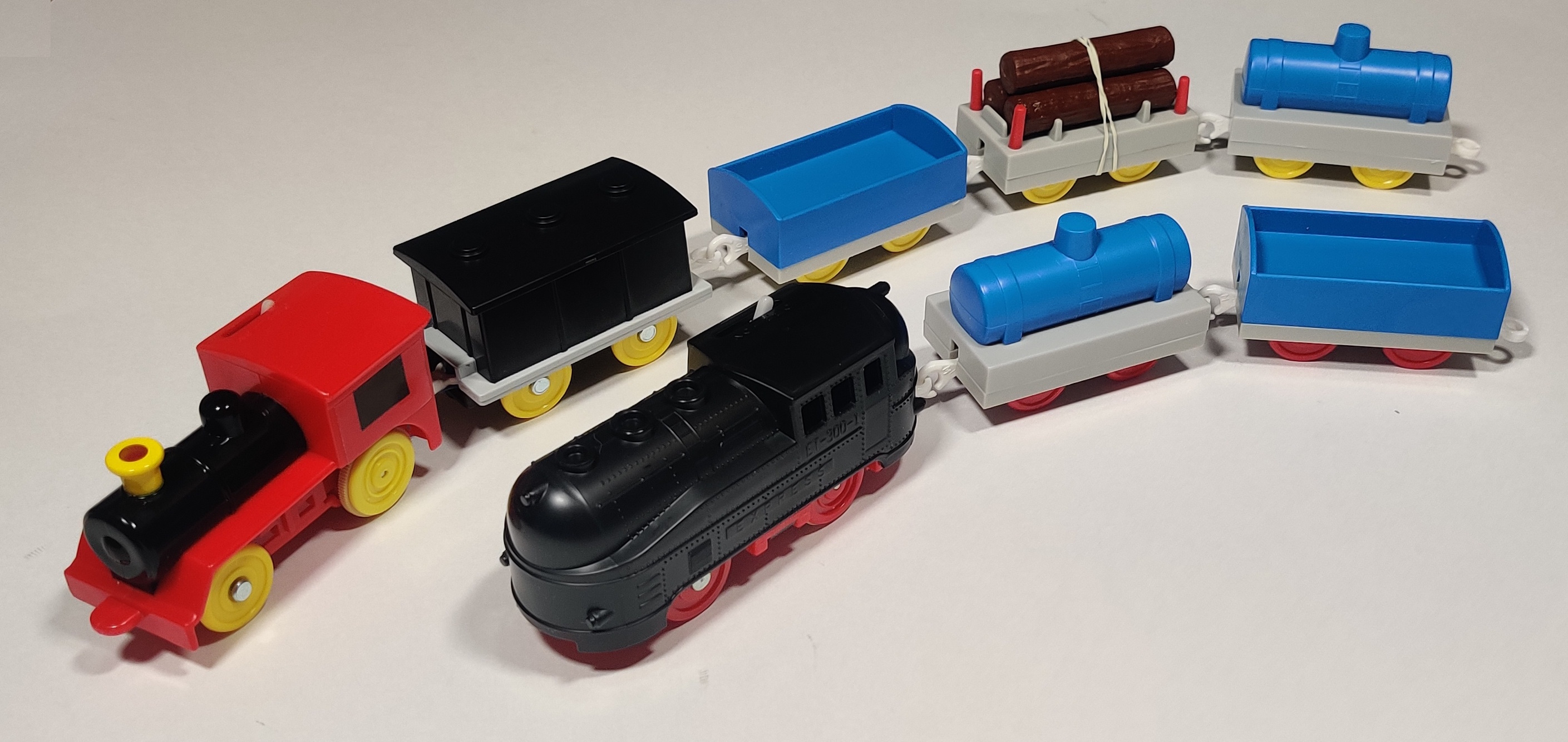
The Electric Plastic Train was originally adapted from a German clockwork train and this reprint is fairly close to the original other than the updated chassis. The back of the box says of the Electric Plastic Train: The "Electric Plastic Train" released in 1961 (Showa 36) was a three-car train, including the first motor-powered vehicle in the series, and ran on a single C battery. The three-car train system which runs on C batteries has been inherited by current Plarail vehicles. Like the "Plastic train," this "Electric Plastic train" is also a vehicle with an original design. There was also a red color variation of the train. Production ended in 1966 (Showa 41). Like the Plastic Train, the red version of the Electric Plastic Train mentioned here was included in the Plarail 40th Anniversary Album.
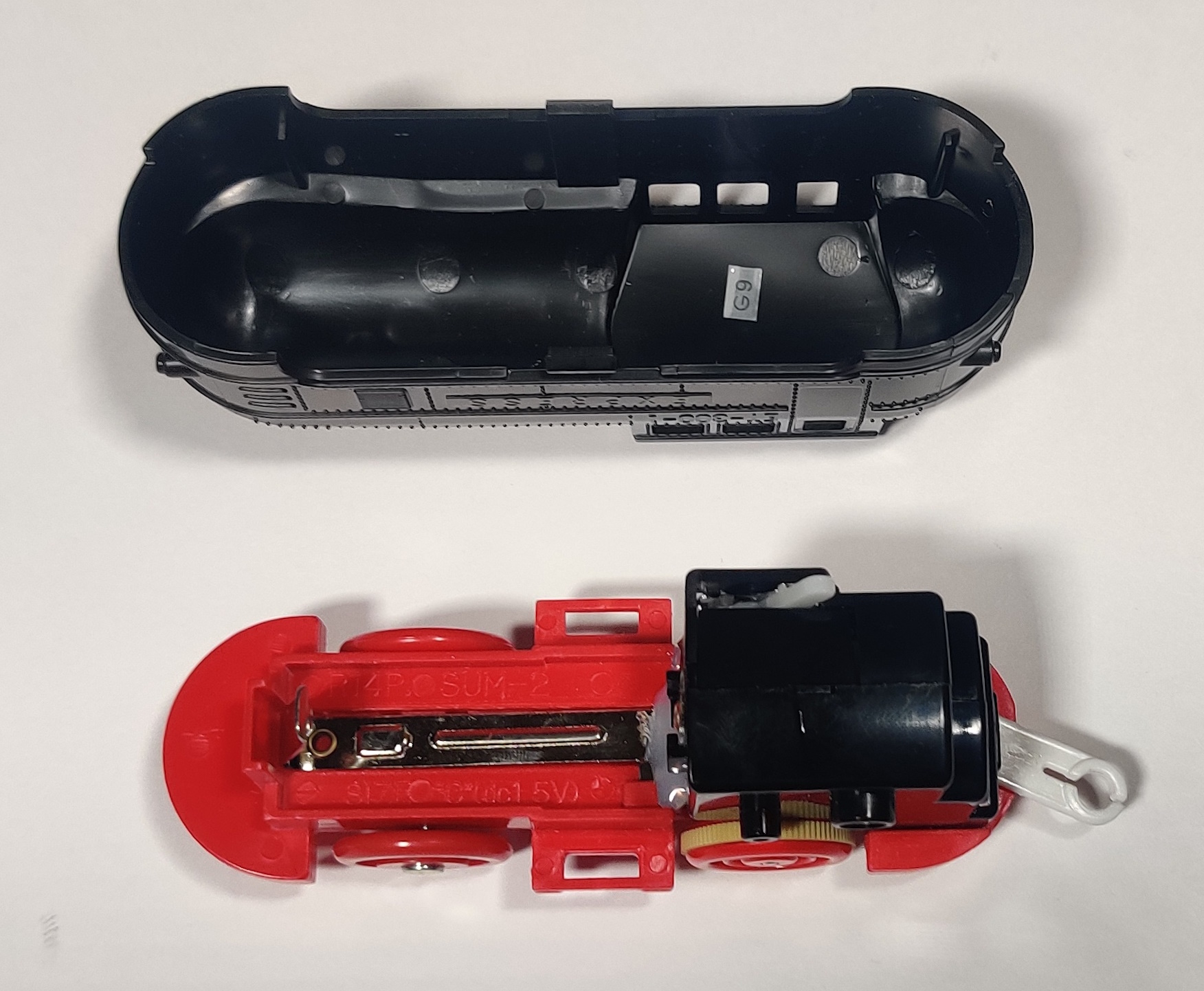
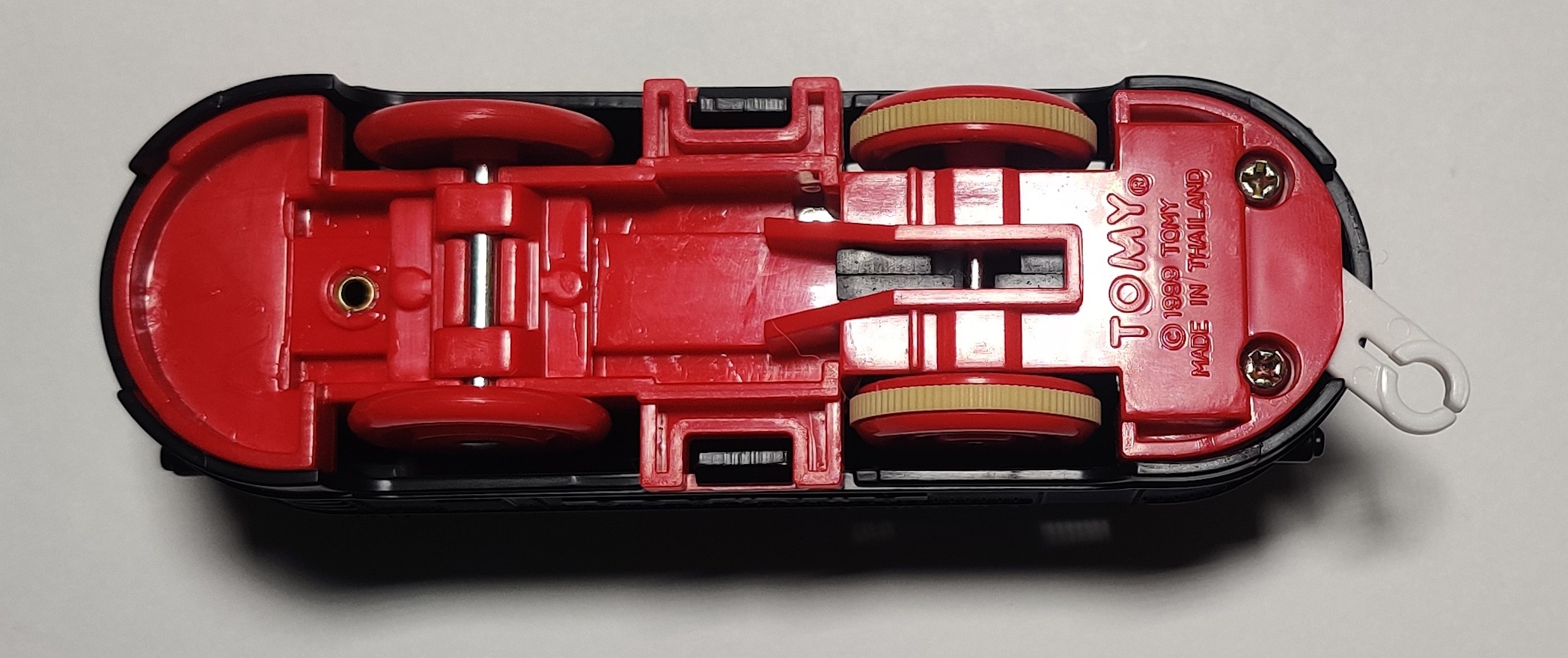
The Electric Plastic Train uses a Thomas-style gearbox with a C battery and a white power switch with admittedly a kind of odd looking blob of hot glue over the contact point between the gearbox and contact strip in the chassis. It seems a little weird to put this on a nice anniversary product, but I suppose it doesn't really matter. I otherwise like this little chassis and reproduction as a whole.
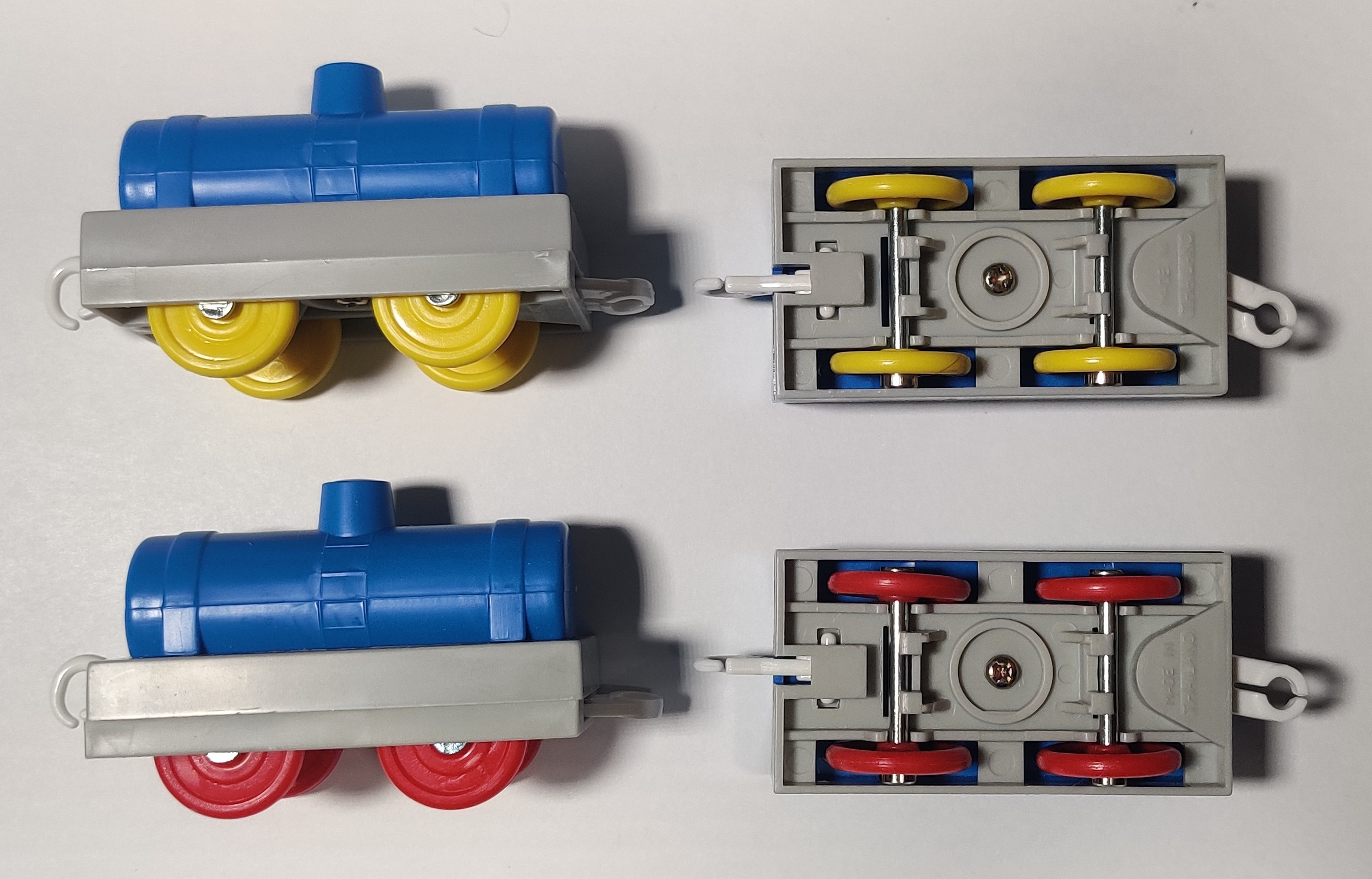
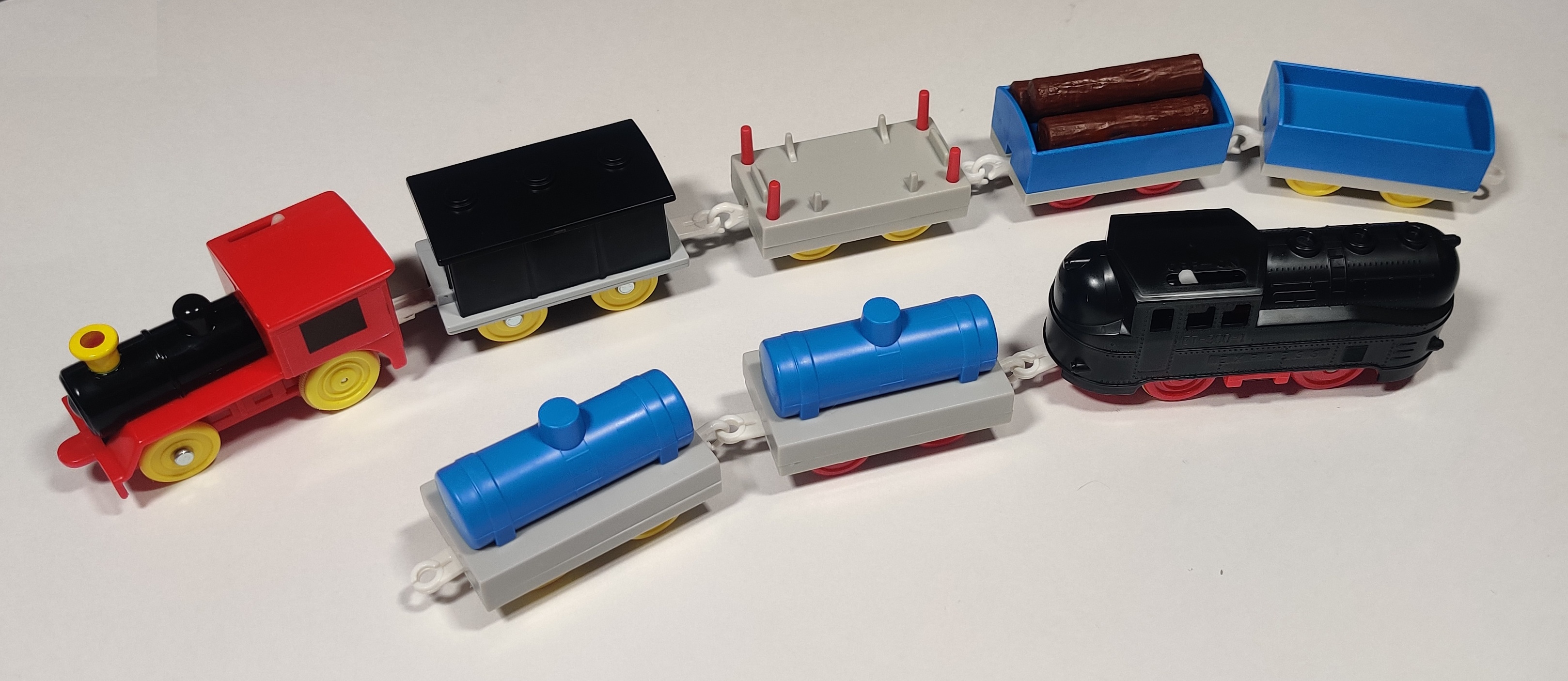
The two tankers and well wagons are obviously very similar but they do have different color wheels. The chassis are adapted from the short freight cars, and the logs can be loaded into any of the open wagons. The logs have no regional mark but do have a slot mark and seem to be out of the standard Thailand log toolings, as they have the same small scoring marks as other 90s Thailand-made logs. The box car stands out nicely (even if it must always be coupled behind the Plastic Train) and the log car is also pretty neat, if not a little fragile like the originals. Reproductions of the yellow versions of these cars are also included in the 40th Anniversary Album.
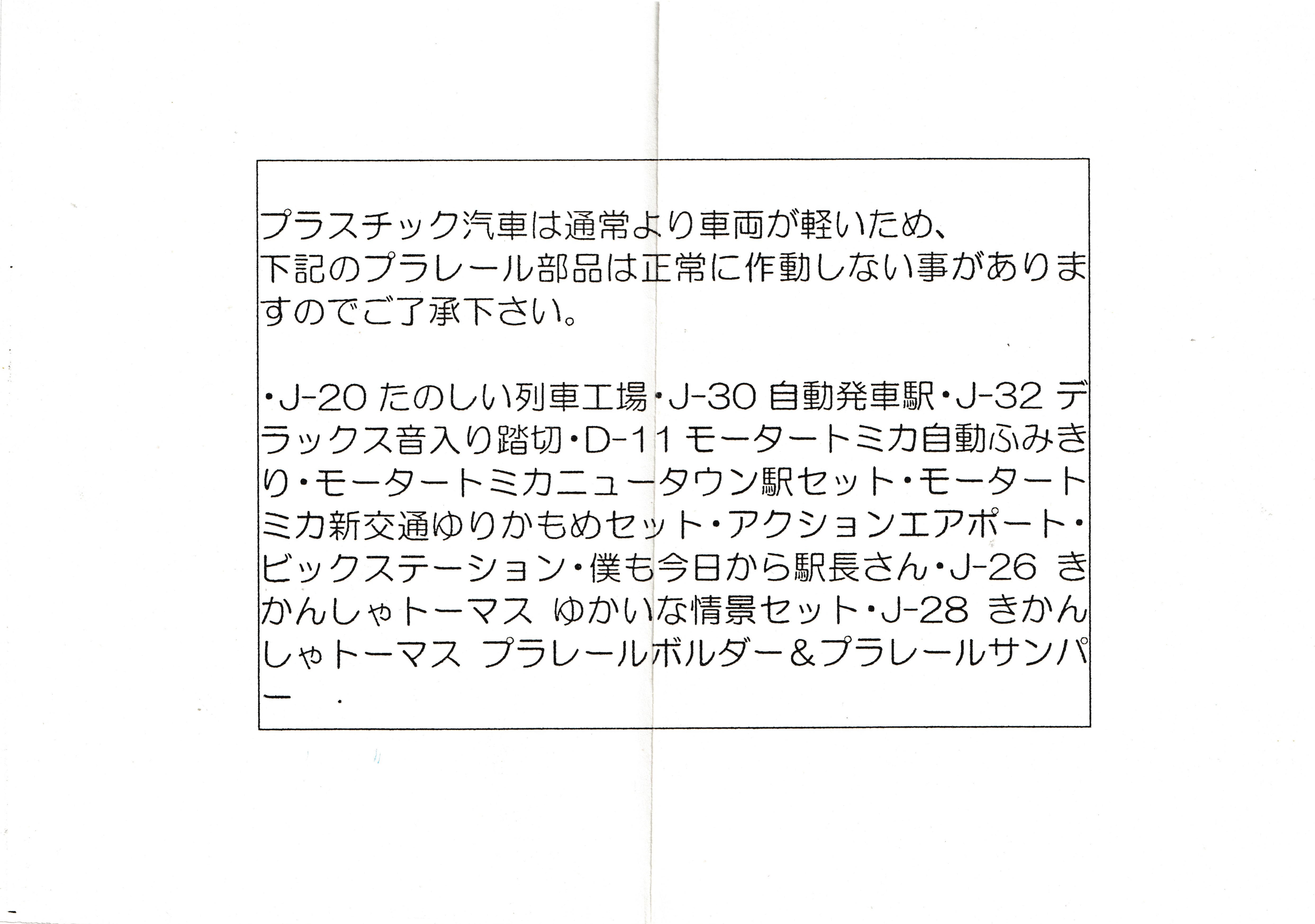
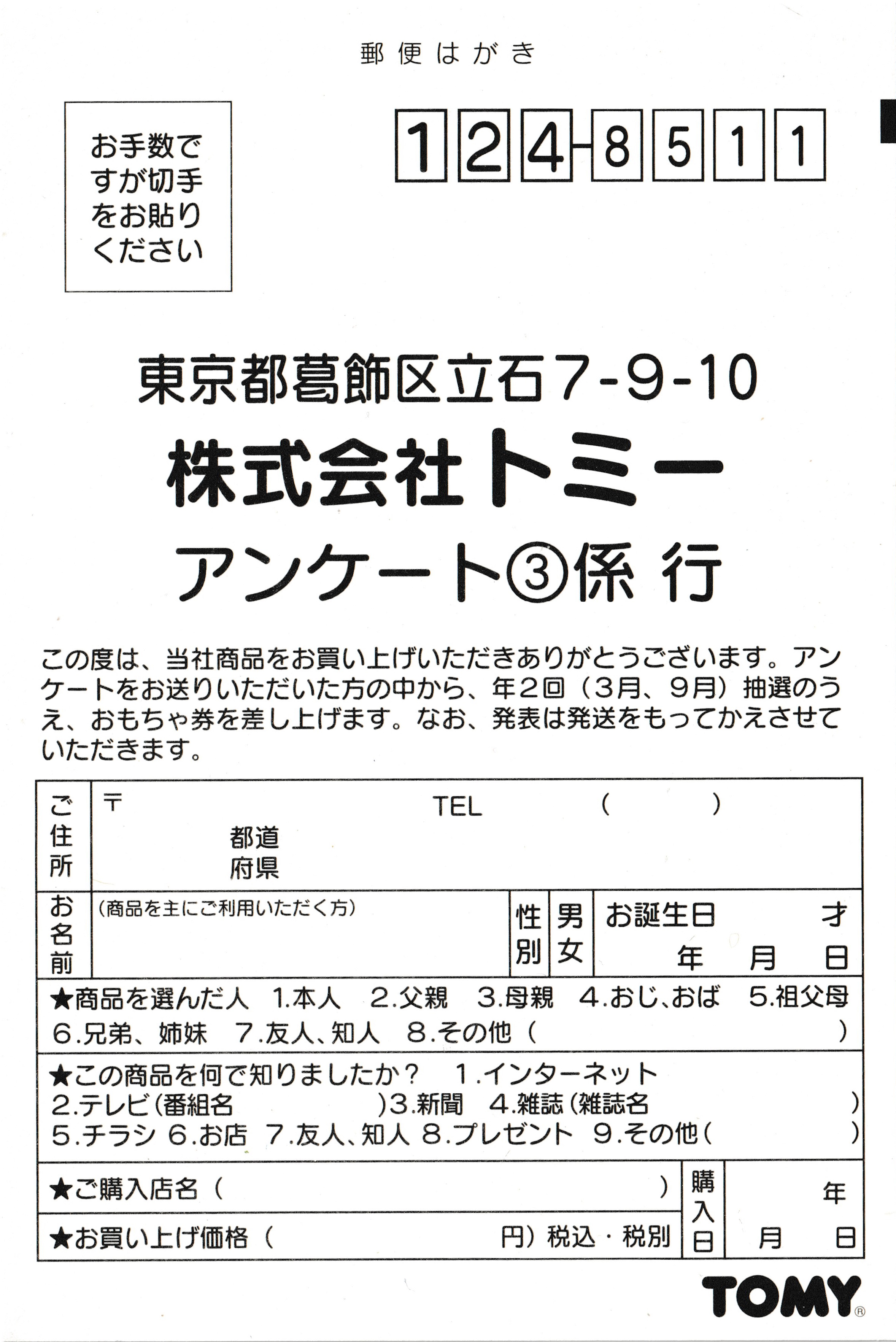
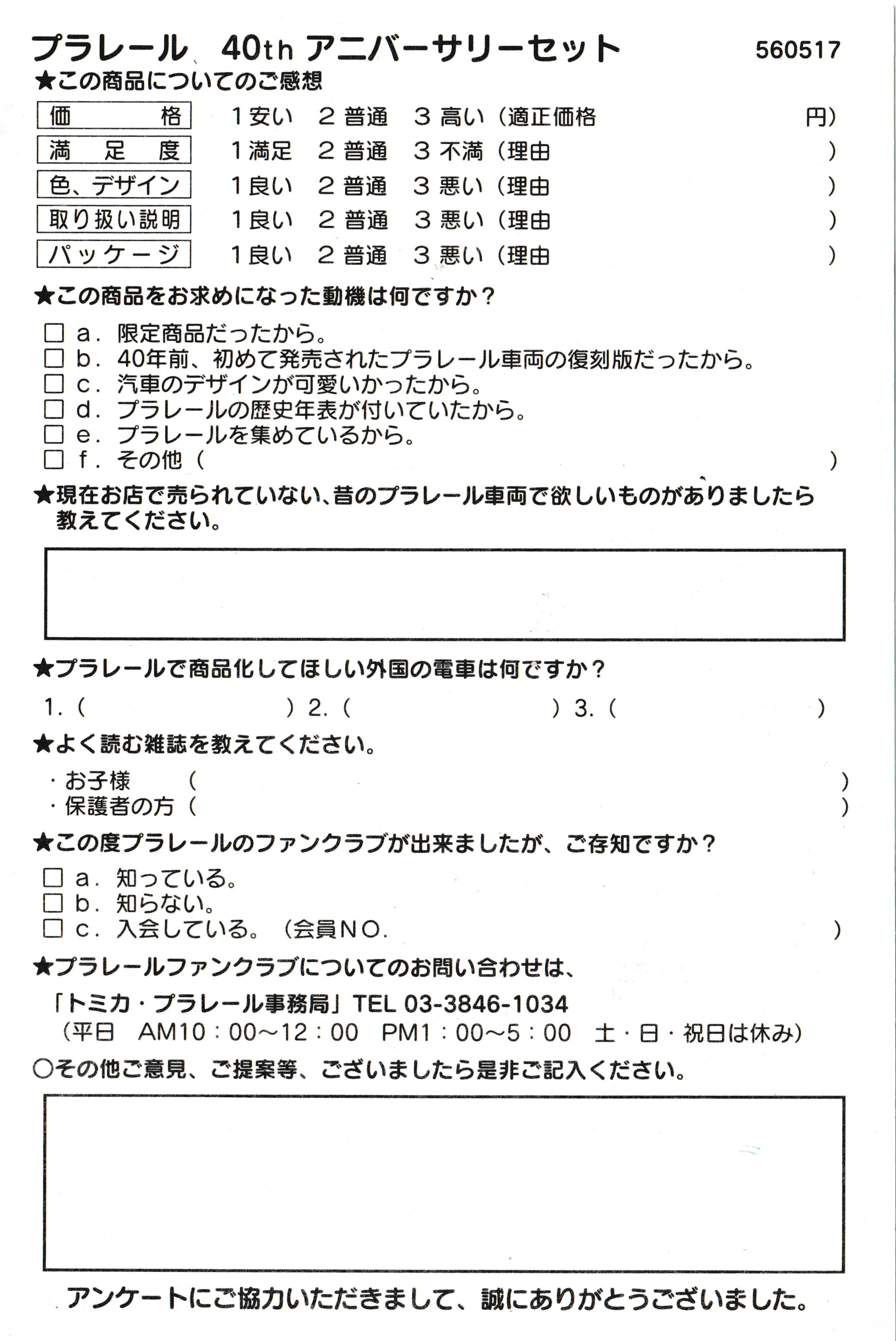
Included in the unused copy of this pack that I bought some time in 2021 were the original compatibility notice and survey card.
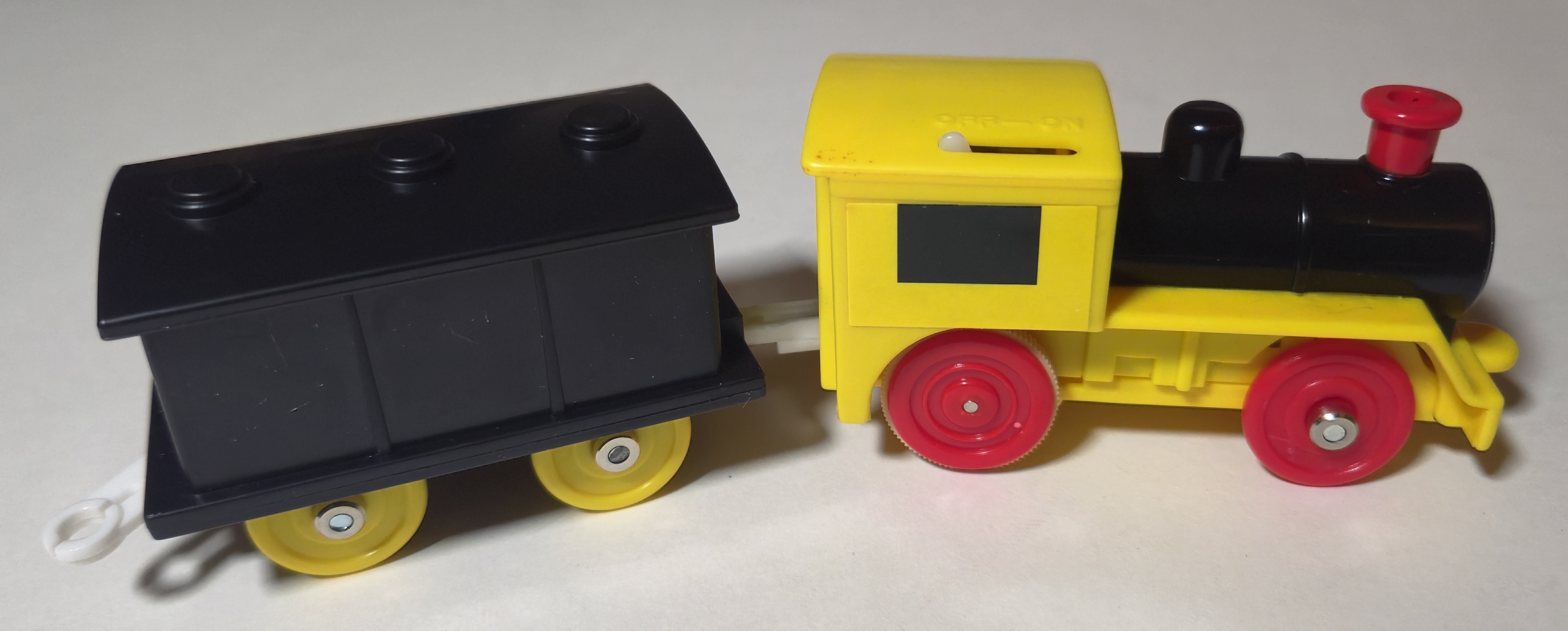
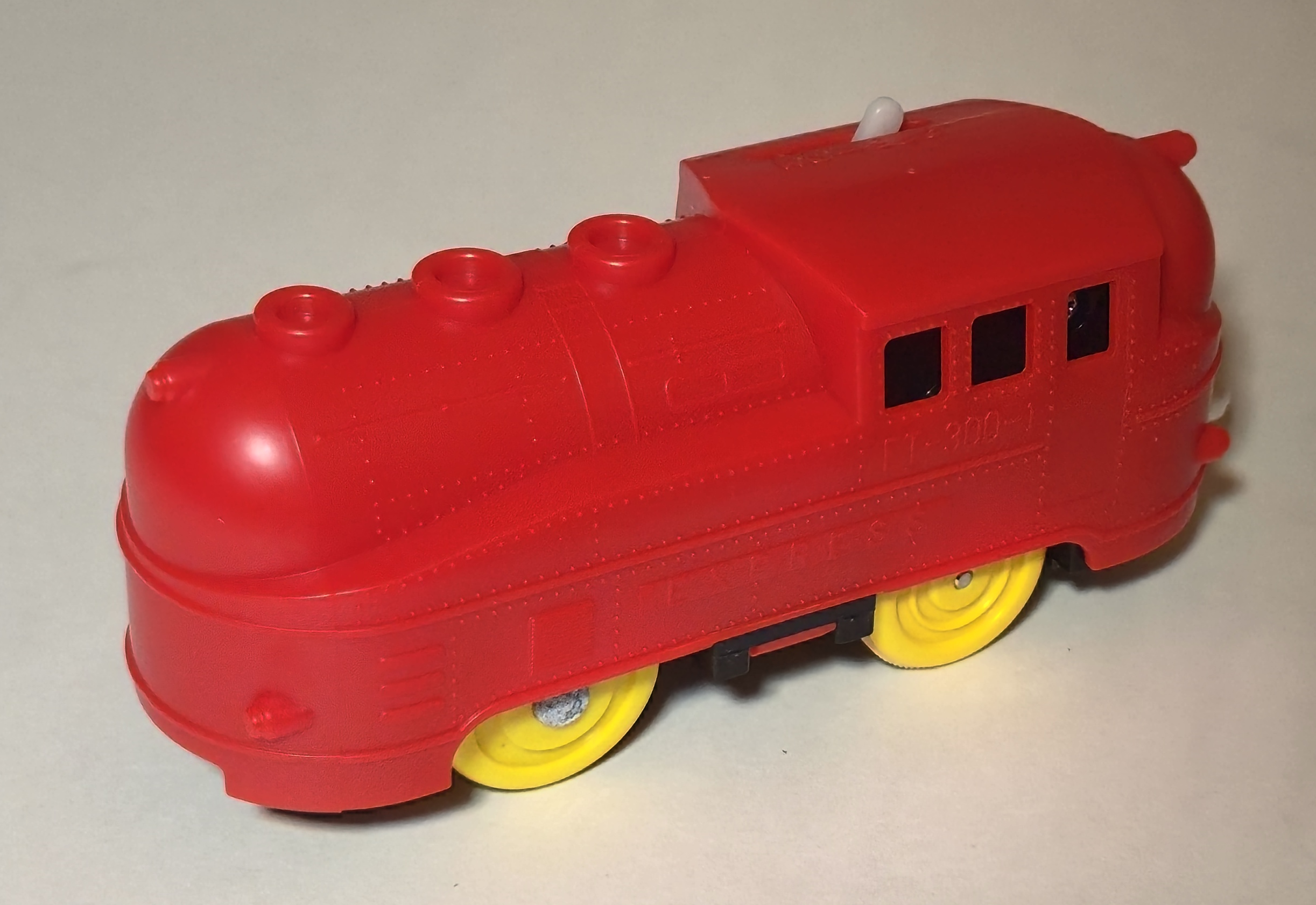

As noted above, versions of the period color variations of the Plastic Train and Electric Plastic Train and their cars appear in the Fan Club Exclusive Plarail 40th Anniversary Album.
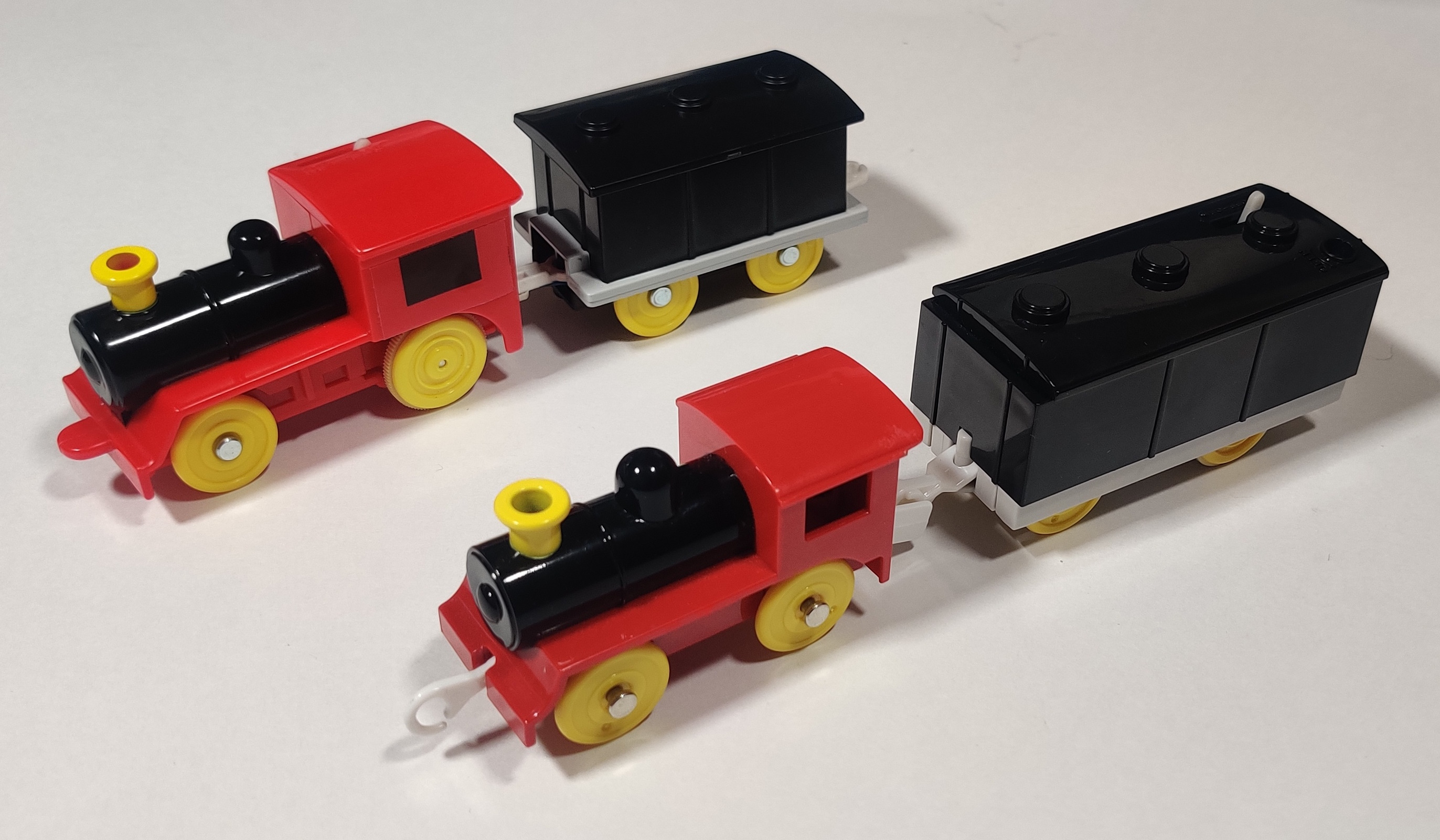
The Electric Plastic Train reissue tooling was used a few more times as Plarail Expo giveaways as well as in the Plarail 45th Anniversary Set. For the 60th anniversary of Plarail in 2019 Tomy made a Reissued Plastic Train that was free-rolling like the original with a separate powered box car.